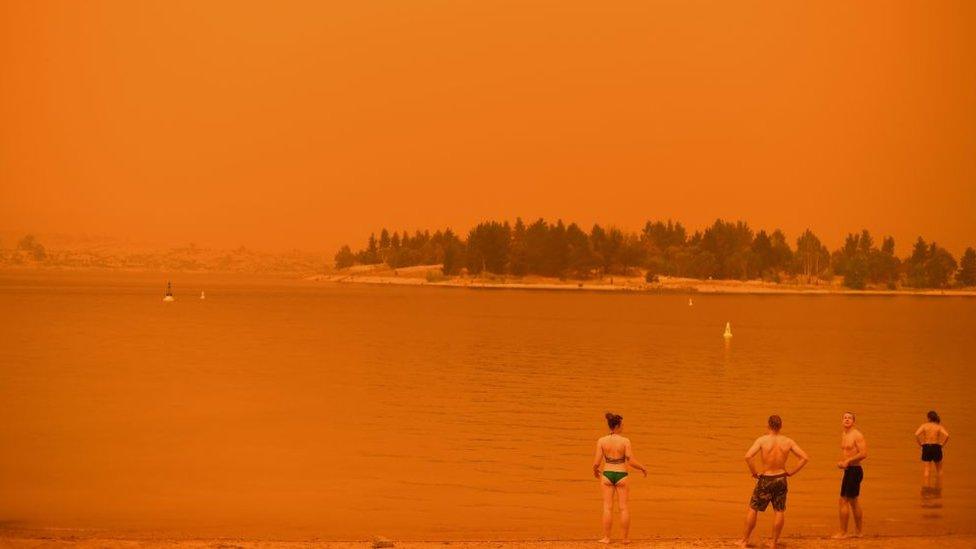Sydney records hottest November night on record
- Published
BBC Weather's Susan Powell looks at the record breaking overnight temperatures in Sydney,
Sydney has reported its hottest November night on record, with the official start of summer still days away.
The city recorded a minimum overnight temperature of 25.4C and then hit 40C during the daytime on Sunday.
Dozens of bush fires are already burning in New South Wales with hotter weather predicted on Tuesday.
The states of Victoria and South Australia also reported soaring heat over the weekend.
"November has been quite unusual in many ways. We have only seen about half our normal rainfall and it is quite possible it will be one of our hottest Novembers on record," Andrew Watkins, of the Bureau of Meteorology (BOM) noted on Friday.
Allow X content?
This article contains content provided by X. We ask for your permission before anything is loaded, as they may be using cookies and other technologies. You may want to read X’s cookie policy, external and privacy policy, external before accepting. To view this content choose ‘accept and continue’.

Sydney's record temperature was recorded at Observatory Hill in the Central Business District. By 04:30, the temperature had risen back up to 30C, external, the Sydney Morning Herald reports.
The previous record at Observatory Hill was 24.8C in 1967.
Images from Sydney show huge crowds of people flocking to the beach.
The New South Wales health department has reminded people to keep to social-distancing regulations, external in order to stop the potential spread of coronavirus.

People have been urged to keep to social-distancing rules
BOM has predicted a five- or six-day heatwave in parts of northern NSW and south-east Queensland.
And the Rural Fire Service (RFS) has warned of a "very high to severe fire danger forecast" in eastern and north-eastern parts of New South Wales. On Sunday the RFS reported 62 bush and grass fires, external.
It is the first weekend of significant bushfire activity since the end of last summer, which saw Australia's most intense bushfire season on record, though not its most deadly. The bushfire season of 2019-20 saw fires sweep across 24 million hectares of land.
The blazes affected every Australian state, destroyed over 3,000 homes, and killed or displaced nearly three billion animals. At least 33 people were killed.
On Friday, RFS Deputy Commissioner Peter McKechnie urged people to have fire plans ready.
"This is the first time since the devastating season last year we've seen widespread elevated fire danger, external," he said.
- Published30 October 2020

- Published21 March 2020

- Published28 July 2020
